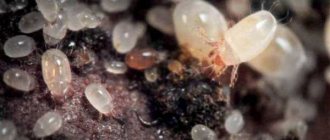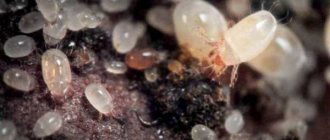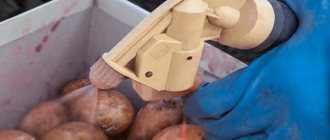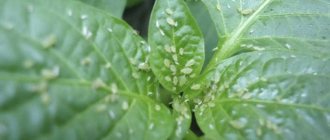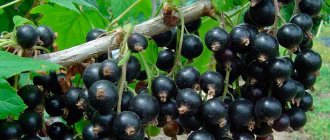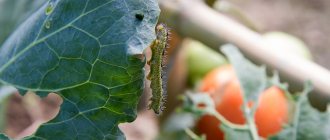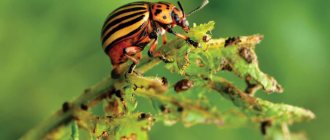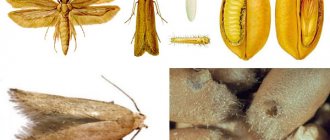Orchid diseases, unfortunately, are not uncommon. The plants are very popular in the home flower garden. This is largely due to its simple care (many consider the orchid to be a complex and capricious plant, but this is not so, because maintaining temperature, moisture and bathing once a week is enough) and flowering almost all year round. Nowadays it is quite difficult to find complete information about the correct maintenance of a flower, so diseases often accompany this plant. Let's look at what diseases are considered the most common, as well as how to properly treat them at home.
Why do spots appear?
There are many types of orchids. This graceful and delicate flower attracts many beginners and experienced gardeners. However, not everyone is ready for the vagaries of this plant. Without certain care and microclimate in the apartment, phalaenopsis will lose its presentable appearance, get sick or die.
Those who have grown an orchid at least once have probably encountered such a problem as the appearance of characteristic spots on its leaves. These spots can vary in color, be dry or wet, sticky or fluffy.
Black
Quite often, black spots appear on exotic leaf blades . This means that the plant is sick:
- Usually black spots indicate active late blight. Late blight is dangerous for orchids, because without proper treatment, the plant can quickly die from this disease. At first, the spots that appear on the leaves have a purple tint, then they gradually begin to darken and acquire a black color. If you notice such defects on your phalaenopsis, then immediately begin treatment before it is too late. Most often, late blight develops when the watering regime is violated (overwatering).
- Sometimes black spots can be a consequence of active chlorosis. But with this disease, the foliage will not only become covered with dark spots, but will also curl.
- No less often, black and yellow spots on the leaves of an orchid indicate its infection with a fungus. The size of such defects may change as the infection progresses. If left untreated, the plant will die.
Yellow
Yellow spots on phalaenopsis leaves indicate discomfort of the plant:
- Such defects appear often, for example, when the flower is constantly exposed to direct sunlight. These defects look like many small yellowish dots strewn across the leaf plate. The problem can be solved with the help of special medicinal preparations, as well as by changing the conditions of the plant to more suitable ones.
- Sometimes yellow spots are accompanied by inclusions of black defects. This indicates an active fungal infection.
- In rare cases, uneven convex growths of a yellow hue appear on the leaf blades of the flower. Over time, they begin to push through the infected area of the leaves. This means that the leaf tissue of the flower is dying. This problem is not as bad as it seems. You just need to provide the orchid with the necessary care and use only the recommended water for irrigation.
- If yellow spots appear on the leaves as a result of bacterial diseases (the yellow spots have a uniform shade and reach approximately 6-7 mm in diameter), you need to pay attention to the temperature in the room (the temperature is too high) and the ventilation in the room.
Brown and brown
Brown and brown spots indicate serious problems with the orchid. Such defects can be wet or dry:
- Dry spots indicate increased humidity in the room, which the flower does not like. If this level is not adjusted in time, the spots will completely cover the flower and it will die.
- Brown spots also indicate the presence of bacterial rot. With this disease, defects spread over the entire surface of the flower. If the leaf is completely covered with such defects, then the only correct solution would be to dispose of this plant element.
- Brown spots indicate active brown rot. It affects the rhizome of the flower and then spreads to the leaves.
Brown spots appear gradually with brown rot, so you have the opportunity to notice the presence of the disease at an early stage and begin to treat the plant.
White
The most common problem that appears in phalaenopsis is white spots on the leaves. Typically, the appearance of such defects indicates the course of a bacterial, viral or fungal infection.
Sometimes, in addition to spots, a light whitish coating appears on the leaves. Most often it appears on the lower half of the leaf. Gradually, this plaque moves from the leaves to the rhizome and stems, which is why the plant begins to dry out and soon dies. The disease that causes these symptoms is called powdery mildew. The fight against it must begin as early as possible, since treatment will take a lot of time and effort.
Bright
Most often, the spots that appear on the leaf blades of phalaenopsis are not bright. However, in some cases, defects of a bright red hue appear on the plant. There are several reasons for the appearance of such deviations :
- the orchid stands in direct sunlight;
- the plant suffers from brown rot;
- the orchid became ill with anthracnose;
- phalaenopsis was attacked by a spider mite or scale insect.
What can a powdery mildew and mealybug infestation lead to?
If the leaves or roots are covered with a white coating due to powdery mildew, the flower must be treated immediately, since fungal spores spread extremely quickly . Spots will very soon appear on the upper side of the leaf, leading to deformation and rotting; the same thing threatens the roots of the orchid.
The most dangerous parasite for a plant can be considered a female mealybug. They attach themselves to a flower and suck the juice out of it, while injecting poison. The insect's nest is shrouded in a white, airy coating, around which one can often find white dots - the larvae of the parasite.
In addition, the waste products of the mealybug, which can be found in the form of sticky spots, become an excellent breeding ground for fungal infections.
If formed on the underside of the leaf
In fact, it doesn’t matter where exactly the color and structural defects occurred on the orchid leaf. In all cases you need to act the same way:
- Examine the plant carefully and try to determine the cause of the spots.
- If the cause is a pest attack, then you need to get rid of them first. Often the orchid is treated with a soap solution and then with an appropriate insecticide.
- If the cause is a disease, then you need to study possible methods of therapy in this case and carry out all therapeutic measures as soon as possible before it is too late and the plant dies.
For more effective treatment, it is better to use a combination of traditional methods and chemicals.
Which inclusions are dangerous and which are not?
It is quite difficult to say with absolute accuracy which defects are dangerous for the plant and which are not.
However, if the inclusions are not too noticeable (for example, the spots are small or the pigmentation of the defects is not very different from the rest of the sheet), then there is nothing to worry about. But you shouldn’t be too careless about any changes in the condition of your orchid. Any defects can develop into something more serious and dangerous at any time. The main thing is to notice the danger in time and prevent it.
Danger to the flower
Any change in the appearance of the plant, including the appearance of inclusions, is a sign of the development of a disease. This can happen due to improper care, and sometimes the disease is transmitted from a diseased flower to a healthy one. The disease leads to the death of the flower completely or the death of some part of it. Therefore, the main task of the gardener is to monitor the appearance of the phalaenopsis and respond in a timely manner to the slightest changes.
How can you tell when a plant is sick and when pests appear?
It is possible to determine whether a plant is sick or is suffering from pests only through a thorough examination.
Signs of infection:
- If dark spots or brown spots (with or without a rim) appear on the leaves, then the plant has been affected by rot.
- If the plant has turned yellow at the base, dried out, or the surface of the leaves has wrinkled, the orchid is suffering from improper care. Treatment is carried out through restoring the light regime and proper watering.
- If first light and then brown streaks appeared on the flower, gradually merging into stripes, and the leaves turned yellow and began to fall off, then the phalaenopsis was attacked by a virus.
Signs of pests:
- Flowers and inflorescences changed color and began to fall off, and uneven silver spots appeared on the leaves.
- White lumps collect in the axils of the leaves.
- Shoots and leaf blades are covered with brown growths with warts (they are easy to remove). This indicates the presence of scale insects or false scale insects.
- The appearance of stains accompanied by stickiness.
- The appearance of red dots on the surface of leaf blades and/or the covering of shoots and leaves with a whitish tint.
Sticky sweet drops
Sticky sweet drops do not always indicate an orchid disease. The flower may secrete nectar to attract insects for pollination.
In the case of a flower disease, sticky formations may arise from excessive moisture. The flower thus gets rid of excess moisture.
The appearance of spots can also be a defense mechanism against pests or protection from burns from direct sun rays.
How to cure?
Treatment of the plant should be started immediately after the first symptoms are detected and the flower is examined.
Chemicals
Chemicals are an essential component of any orchid treatment.
In the garden store you can find many effective remedies that will help defeat not only infections, but also pests. The following formulations will help get rid of stains on leaves:
- fungicides;
- Fitosporin;
- Fundazol;
- Pure flower;
- antibacterial drugs;
- antiseptics;
- compositions containing copper;
- Bordeaux mixture;
- Quadris;
- Aktara, Aktellik, Nurell-D (intestinal poisons);
- Fozalon (contact poison);
- I cheated.
But before using any chemical, you need to carefully study the instructions for use. Even if you are confident in your experience in matters of floriculture, you should not neglect the rules and recommendations. It is better for beginning flower growers not to rely on themselves, but to consult with specialists. They will help you avoid mistakes when treating phalaenopsis.
You need to purchase all chemical preparations for plants only in specialized stores, since this way you will avoid purchasing counterfeits.
Traditional methods
Not all gardeners are willing to use chemicals when treating their plants. They prefer less effective but safer traditional methods. First of all, you need to isolate the sick orchid from healthy flowers and provide it with proper care. Monitor the temperature and humidity in the room; during illness, phalaenopsis is especially sensitive to any changes.
Popular folk methods for treating spots on orchid leaves:
- You can treat the leaves with ground cinnamon or activated carbon. They have antibacterial and healing effects.
- Many also use iodine on damaged areas of the leaf blade. But this method of dealing with defects will only be effective if the disease has not yet started.
- When fighting harmful insects, some gardeners use a soap solution. You can treat the leaves with it to wash away pests.
What to do?
If the cause of spotting is improper care, correcting the conditions will quickly bring the plant back to a healthy state. When time is lost, bacteria, fungi, viruses destroy the flower, then it’s time to take serious measures.
Reanimation
Action plan:
- The orchid has lost its leaves and growing point, retaining only the stump with a root collar and rhizome - plant it in a fresh substrate in a mini-greenhouse. Without spraying, with moderate watering.
- The leaves are completely or partially lost, 2-3 roots remain, the stem has a growing point - plant it in fresh soil, use spraying instead of watering.
- The peduncle is preserved without a growing point, horses, leaves - divide into segments of 2-3 cm with a dormant bud. Place on the surface of moist sphagnum moss.
Treatment of Phalaenopsis flower with drugs
Action plan:
- Isolate the orchid and rinse in warm water.
- Wipe the leaves dry with a napkin or cotton wool, especially in the area of the spots, to remove the coating of spores.
- Remove affected areas to healthy green tissue.
- Disinfect the cut area with charcoal or brilliant green.
- Use a fungicide that targets a specific fungus (Benomyl).
How to normalize care?
A sick plant requires special attention. Normalization of care may take some time, so be patient:
- When the first noticeable spots appear, the orchid should be immediately quarantined so that it cannot infect healthy plants. She needs to be kept in isolation until she recovers completely.
- Carefully monitor the temperature and humidity levels (at least 60%) in the room.
- Adjust the watering regime, avoid overmoistening the substrate. Be sure to spray the plant.
- Inspect the plant every day to identify the emergence of new symptoms or the fading of old ones.
- Create sufficient lighting conditions for phalaenopsis. Place the plant close to the window, but avoid direct sunlight. If you don't have enough daylight, use fluorescent lamps.
Prevention measures
To prevent the appearance of third-party spots on phalaenopsis leaves, you need to follow standard preventive measures:
- Provide the plant with proper watering (apply a new portion of water only when the soil is sufficiently dry).
- Daily temperature changes in the room should not exceed 4-5 degrees. If the temperature drops below 15 degrees, the plant will die.
- Daylight hours for an orchid are 10-12 hours. The light must be diffused.
- Fertilize a couple of times a month.
- Choose only high-quality soil for phalaenopsis, which contains tree bark, moss, peat and river sand. Be sure to provide the plant with adequate drainage.
Caring for an orchid can be very difficult. Even experienced flower growers face difficulties, let alone beginners. One of the most common problems is the appearance of third-party spots on the leaf blades of phalaenopsis. This defect may indicate improper care, the presence of pests or serious diseases in the plant. So don’t delay your examination and treatment.
Causes of spots
The reasons why white or other spots appear on the trunk of an orchid or on its leaves are bacterial, viral, and fungal infections.
The source of infection is most often the soil. Unsuitable maintenance conditions can provoke the appearance of spots on phalaenopsis: dryness or excessive humidity in the room, a dark place or short daylight hours, location close to a heat source or cold glass. Another reason for the spread of the disease is a nearby plant infected with a virus or bacteria. This is why phalaenopsis cannot be placed with other flowers.
The treatment of the plant depends on which characteristics best suit the description. It is also possible to predict the recovery period and the likelihood of resumption of flowering.
